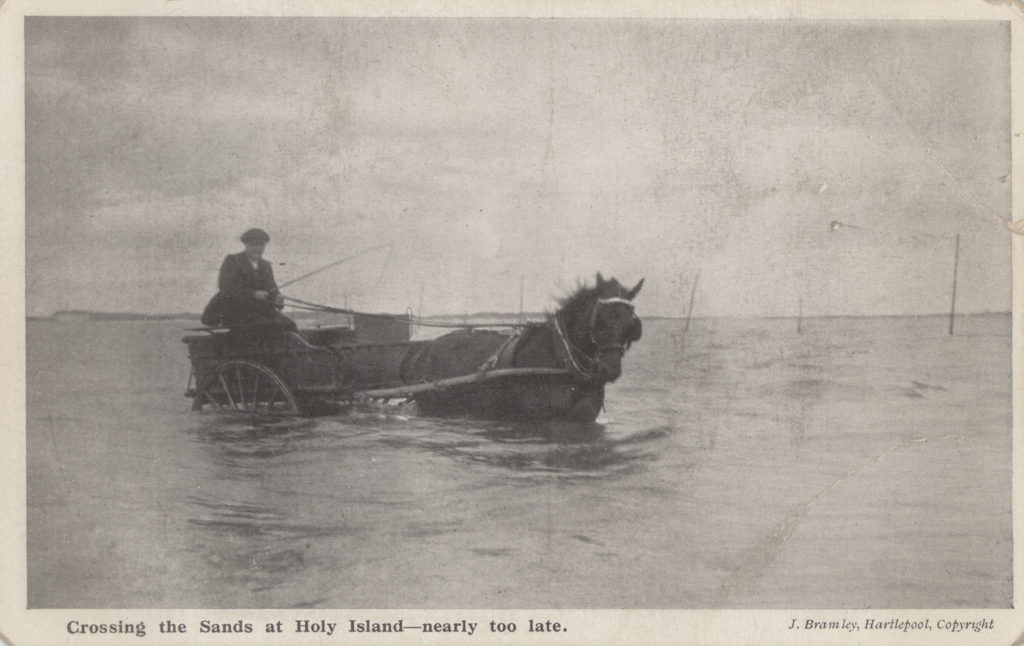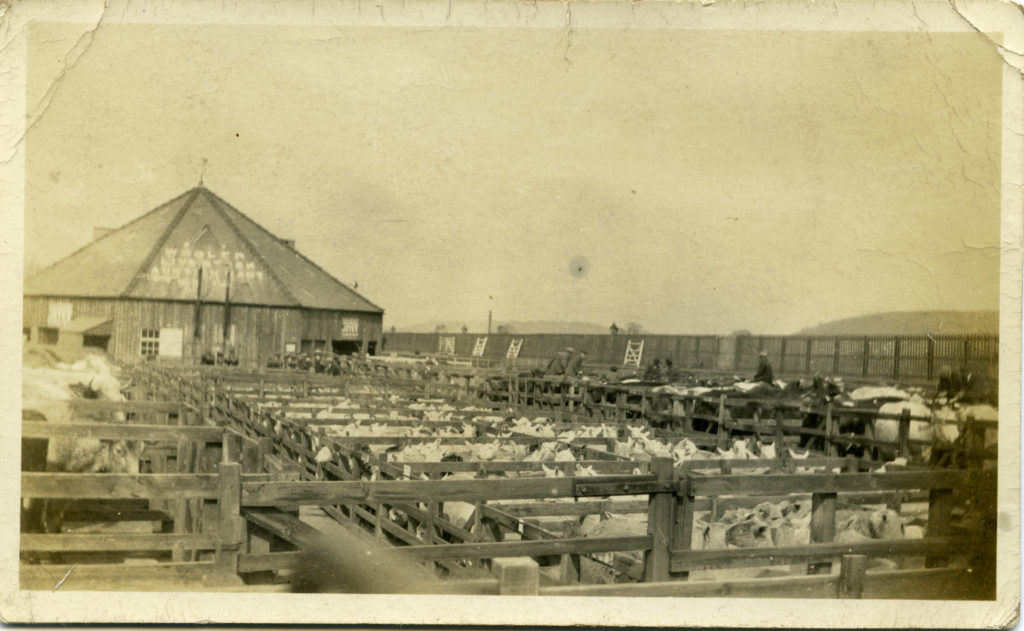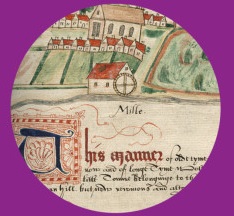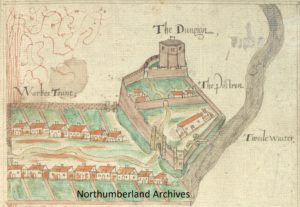On the evening of Wednesday 1st December 1943, tragedy struck the communities of Togston and Amble. An RAF aircraft – a Short Stirling Mk. III – crashed into the top floor of Cliff House Farm, just outside Amble.
The bomber had taken off from RAF Mepal, Cambridgeshire, on 1st December. Its mission, along with other aircraft, was to drop sea mines off Denmark. On the return flight, the aircraft were diverted to RAF Acklington due to fog. The survivor reported that the plane had experienced trouble but that the Pilot, Warrant Officer Kerr, had managed to keep the plane in the air until he was safely over Amble, but could not maintain control and crashed into the farmhouse at 10.40pm
Mr and Mrs William Robson were entertaining their friends, Mr and Mrs Rowell, at the farm that Wednesday. Mr Rowell, a butcher in Amble, had visited the Robson’s to roll some bacon, and Mrs Rowell had been invited along for supper. They had just finished their meal when the plane crashed into the house. Mr Rowell described the incident in the Newcastle Journal and North Mail (in an article published on Friday 3rd December 1943),
there was a deafening roar and the house came down about our ears… Our first thoughts, naturally, were for the children. We pulled at the wreckage in an effort to find them. Then fire broke out and we had to throw water to keep down the flames.
The four adults were injured and in shock. Neighbours and rescue squads arrived at the scene quickly. The five Robson children, who were sleeping upstairs at the time of the crash, were killed on impact:
Sylvia, aged 9 years
Ethel, aged 7 years
Marjorie, aged 5 years
William, aged 3 years
Sheila, aged 19 months
The bodies of the children were found on Saturday 2nd December. The image below is from a register, a ‘Record of Civilian Death Due to War Operations’. All five children’s deaths are recorded within the register. Sheila’s body is noted as being found at 1.30am.
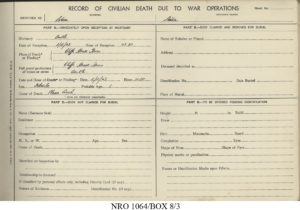
The Stirling bomber had a crew of seven men, but only one survived the crash. He was spotted by Mrs Rowell, running around the field on fire. She called to her husband who ran across to the airman, rolled him on the ground, and extinguished the flames. Mr. Rowell than rushed to the plane to help the aircrew, but could find no one else.
The aircrew were all members of 75 Squadron, Royal Air Force Volunteer Reserve:
Warrant Officer (Pilot) George John Stewart Kerr, aged 22 years. Son of John and Georgina Kerr of High Ongar, Essex. Buried in Chevington Cemetery, Northumberland.
Sergeant (Air Gunner) George William Thomas Lucas, aged 22 years. Son of George and Ellen Lucas of Shepherd’s Bush, London. Buried in East Finchley Cemetery and St. Marylebone Crematorium.
Sergeant (Air Bomber) Ronald Smith, aged 20 years. Son of Basil and Sarah Ann Smith of Leeds; husband of Joan Smith of Halton, Leeds. Buried in Leeds (Whitkirk) Cemetery.
Sergeant (Navigator) Donald Frank Wort. Son of Mr. and Mrs Frank Wort of Parkstone. Buried in Poole (Parkstone) Cemetery.
Flight Sergeant (Wireless Operator/Air Gunner) Derek Arthur Holt. Son of Mr. and Mrs A. Holt of Shrewsbury, Shropshire. Buried in St. Helen’s Cemetery.
Sergeant (Flight Engineer) Leonard George Copsey, aged 20 years. Son of George and Jessie Copsey of Hornchurch. Buried in Hornchurch Cemetery.
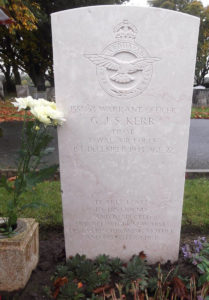
The survivor of the crash was Sergeant (Mid Upper Gunner) Kenneth Gordon Hook of Hambledon, Surrey, who was 20 years old at the time. Even though he sustained serious injuries, he was flying again by February 1944. On 13 March 1944, he was in another Stirling bomber, again taking off from RAF Mepal, for a minelaying operation near Brest, when the aeroplane malfunctioned and the plane crashed, with three of its five mines exploding after impact. Sergeant Hook survived, and by the end of the Second World War had flown 75 operational missions. He retired from the RAF in 1977 with the rank of Flight Lieutenant. He died in 1989 in Devon.
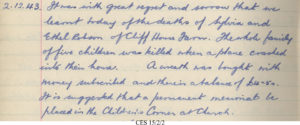
The crash at Cliff House Farm was reported the next day in the Log Book of Amble Church of England School, which Sylvia and Ethel both attended. It notes that a wreath was purchased, and we know (from a newspaper article which reported on the funeral) that this was laid on the grave of the children by staff and pupils, when the funeral took place on Saturday 4th December. The service was held at Amble St. Cuthbert and the interment took place at Amble West Cemetery, where the children were all laid to rest in one grave.
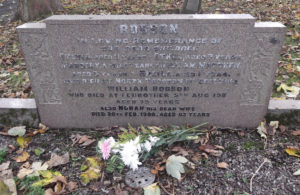
Today, the children and the tragedy that befell them are still remembered. A memorial table stands at the west end of Amble St. Cuthbert’s, and there is a housing estate named after the children, near the site of Cliff House Farm. The estate is named Robson Way, with each of the closes named after a child. The airmen who died are remembered on a plaque inside Acklington St. John the Divine, which was the official church for RAF Acklington.
Mr. and Mrs Robson moved to a farm at Shotley Bridge, before moving to Stannington and later, Fenrother. They are buried in Amble West Cemetery, in the same grave as Sylvia, Ethel, Marjorie, William and Sheila.

